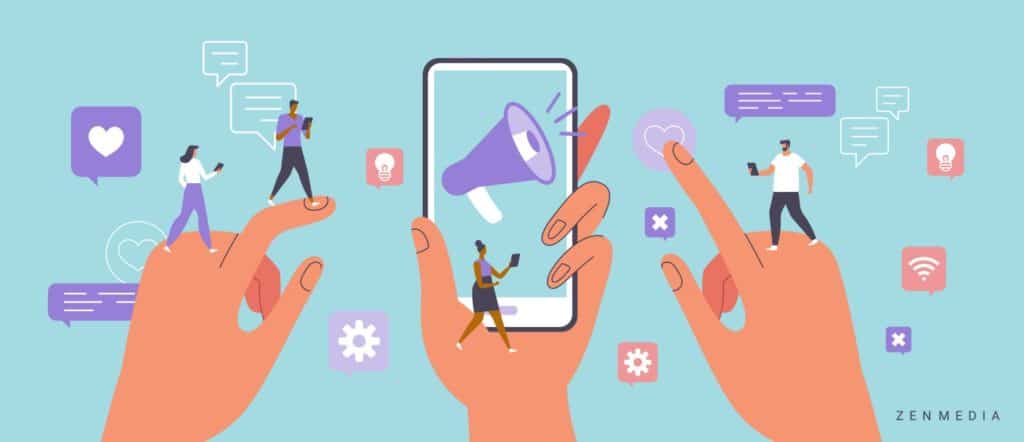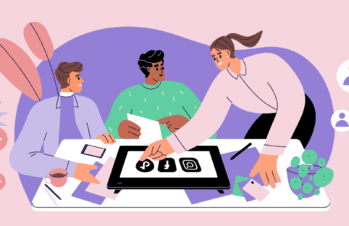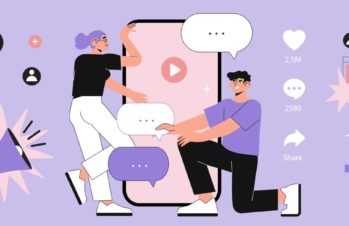A lot has changed since platforms like Twitter and Facebook were first released in the 2000s—low-rise jeans are officially out of fashion (thank goodness), and we’ve traded our iPods for smartphones.
But more importantly, the way we exchange information, communicate, and make decisions has changed.
Think about it—our main “influencers” in the early 2000s were celebrities. Rather than exploring their owned media or learning about celebrities straight from the source, we relied on outlets like TMZ and E! News. We read the headlines while waiting in line at the grocery store, and we consumed photo after photo (often taken without consent) to get the latest on their outfits, relationships, or just to see them just pumping gas (Stars!—They’re just like us!).
Now, thanks to social media, anyone can be a celebrity—or rather, an influencer.
And even better, influencers can control their own story, speak directly to their audience, and create authentic connections that go beyond paparazzi photos.
Related reading: Is B2B Influencer Marketing Worth the Money? Everything You Need to Know About IM Strategies in 2022
This has created an entirely new set of business rules in the marketing world and has, in turn, shaped the way platforms are created and updated.
Just as celebrities partner with brands to help reach the right audience, boost buzz, and collaborate creatively, influencers are partnering with brands. And while many of the influencer partnership goals are the same as those made with “traditional” celebrities, influencers can also take things a step further—they can advance the conversation with their audience, bringing more than just exposure. Their engagement with their audience can translate to the brands they partner with, creating authentic and emotional ties between consumers and the brands their favorite influencers represent.
Related reading: The Zendaya Method: How to Take Your Strategy to the Tipping Point
But did you know that just because an influencer has a big Instagram following doesn’t mean they’re going to be an effective influencer for a business partnership? Plenty of people get hundreds of thousands of followers, but don’t have the metric that makes a difference: engagement.
And engagement rates can make or break your brand.
The Rise of the Micro-Influencer
Research shows that some of the best influencers (with the biggest conversion rates for brands) have a slightly smaller amount of followers (think under 100,000) with good engagement rates.
So what does this mean for marketing companies?
First of all, it’s important to remember that bigger doesn’t always mean better. Sure, we all want to hit the jackpot with a viral video (who wouldn’t?). But if you’re not communicating the right message to the right people at the right time, you’re missing the point.
Micro-influencers help brands speak to a more defined audience. They present a great opportunity to work with a niche group of people centered around common interests or traits.
For example, if you’re a health and wellness company focused on developing keto-friendly meal plans for your clients, do you go for a big celebrity that never discusses health and wellness or a micro-influencer that has already created a thriving, integrated community focused on these same topics?
While you might initially see more sales with a macro-influencer, working with a micro-influencer will bring you into an existing conversation related to your company, and has the potential to generate genuine, loyal customers for your business.
“Dark Social” and How to Influence the Conversation
This same concept applies to social media platforms as well.
What is happening right now in social circles is a broadening gap between narrow and wide circles, without a lot of space in between.
Think about it this way—there’s Facebook (macro-level), and then there are Facebook Groups and Facebook Messenger (micro-level).
Just like with influencers, Facebook has a massive amount of people involved, but that doesn’t mean every person with a Facebook account has something in common. Facebook Groups and the Messenger app allow like-minded people to come together and give space for specific, focused conversations to happen, much like micro-influencers do.
A lot of important conversations happening right now are happening on the micro-level. Platforms like WhatsApp, Slack, and Messenger are creating “water cooler moments”—internal communications with a small group of people. These more private forms of communication on social media are often called “Dark Social”, and nowadays, dark social is where the decisions get made.
As leaders in B2B marketing, we have to find these pockets of communication and join or facilitate them—this is how we can best influence the conversation.
This doesn’t mean macro-platforms are going anywhere—quite the opposite. Broad-based communication platforms, like Discord or Reddit, are still growing. But there is an opportunity to find the micro-conversations happening within the border platform.
At Zen Media, a lot of what we play to is influencing the external and macro conversations and using the engagement we get in the macro space to reach those in the micro or “dark” space. It’s all a part of an integrative communications strategy that connects the dots from macro to micro.
Want to influence the conversation? Let’s chat!




